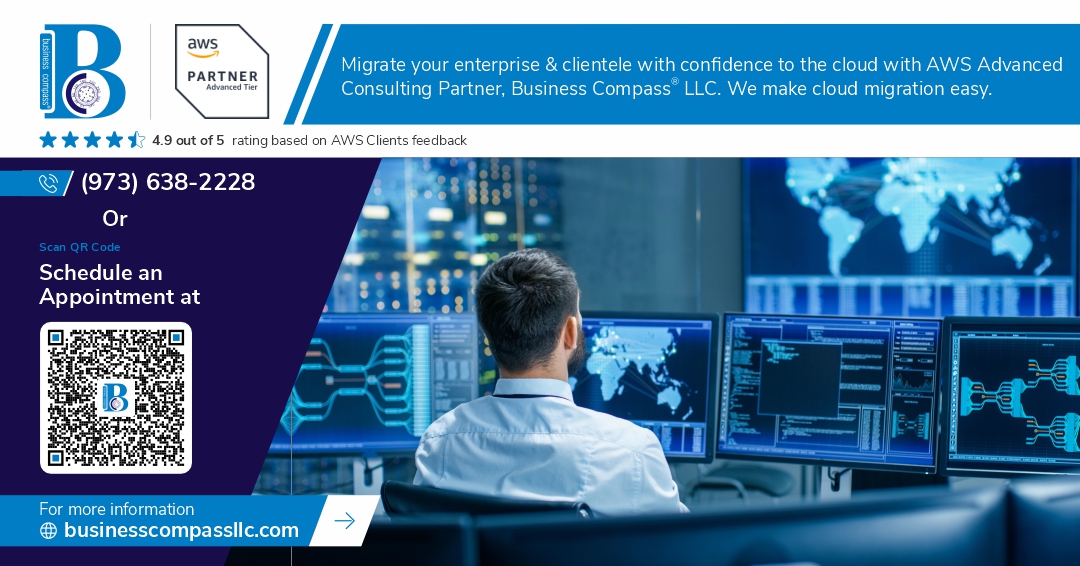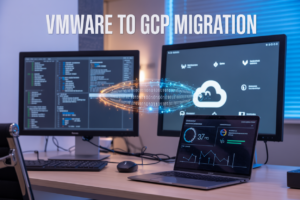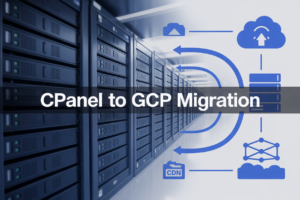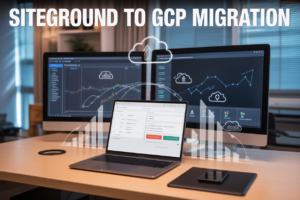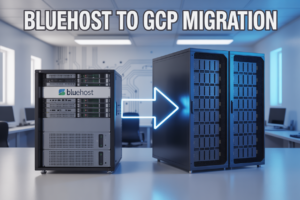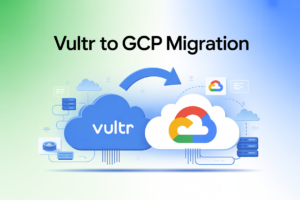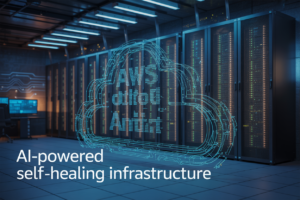AWS Managed Grafana offers powerful cloud monitoring capabilities, but setting it up manually can be time-consuming and error-prone. This guide shows DevOps engineers, cloud architects, and infrastructure teams how to automate AWS Managed Grafana Terraform deployments for scalable monitoring solutions.
You’ll learn to provision AWS Grafana infrastructure as code, eliminating manual configuration steps while ensuring consistent, repeatable deployments across environments. We’ll cover the essential Terraform AWS Grafana configuration patterns that streamline your cloud monitoring with Grafana setup.
First, we’ll walk through creating your Terraform Grafana module and configuring the core AWS Managed Grafana service with proper IAM roles and workspace settings. Then, you’ll discover how to automate Terraform Grafana data sources integration with AWS CloudWatch, enabling seamless AWS CloudWatch Grafana integration for comprehensive monitoring dashboards.
Finally, we’ll explore AWS monitoring dashboard automation techniques and security best practices that help you build production-ready managed Grafana deployment Terraform configurations while optimizing costs and maintaining proper access controls.
Prerequisites and Environment Setup
AWS account configuration and IAM permissions
Setting up AWS Managed Grafana via Terraform requires specific IAM permissions to manage workspace resources, data sources, and integrations. Create a dedicated IAM user or role with policies covering grafana:*, organizations:*, sso:*, and iam:* permissions. Your AWS account must have AWS SSO enabled and configured since Grafana workspaces integrate with SSO for authentication. Enable AWS Organizations if you plan to manage multiple accounts through your Grafana workspace. The user executing Terraform needs administrative access to create service-linked roles and manage workspace configurations.
Terraform installation and version requirements
Terraform AWS Grafana configuration works best with Terraform version 1.0 or higher, ensuring compatibility with the latest AWS provider features. Install Terraform through package managers like Homebrew (brew install terraform) or download binaries directly from HashiCorp’s website. Verify your installation with terraform --version and confirm you’re running a supported version. The AWS provider requires version 4.0+ to access Managed Grafana resources effectively. Keep your Terraform installation updated to leverage new features and security patches for AWS Grafana infrastructure as code deployments.
| Terraform Version | AWS Provider Version | Grafana Support |
|---|---|---|
| 1.0+ | 4.0+ | Full Support |
| 0.15+ | 3.74+ | Limited Support |
| Below 0.15 | Any | Not Recommended |
AWS CLI setup and authentication
Configure AWS CLI version 2.x with your credentials using aws configure or environment variables. Set your default region where you’ll deploy the Grafana workspace, typically matching your primary monitoring infrastructure location. Test authentication with aws sts get-caller-identity to confirm your credentials work properly. For production environments, use IAM roles with temporary credentials instead of long-term access keys. The CLI configuration directly impacts Terraform’s ability to authenticate and manage AWS resources for your managed Grafana deployment Terraform setup.
# Basic AWS CLI configuration
aws configure set aws_access_key_id YOUR_ACCESS_KEY
aws configure set aws_secret_access_key YOUR_SECRET_KEY
aws configure set default.region us-east-1
aws configure set default.output json
Required Terraform providers and modules
The Terraform Grafana module setup requires the AWS provider and optionally the Random provider for generating unique resource names. Configure the AWS provider with your target region and any additional settings like assume role configurations. Popular community modules like terraform-aws-grafana-workspace can accelerate your deployment process. Specify provider versions in your terraform block to ensure consistent deployments across environments. Pin provider versions to avoid breaking changes during updates, especially important for production cloud monitoring with Grafana implementations.
terraform {
required_providers {
aws = {
source = "hashicorp/aws"
version = "~> 5.0"
}
random = {
source = "hashicorp/random"
version = "~> 3.1"
}
}
required_version = ">= 1.0"
}
provider "aws" {
region = var.aws_region
default_tags {
tags = {
Environment = var.environment
Project = "aws-managed-grafana"
}
}
}
AWS Managed Grafana Service Overview
Key benefits over self-hosted Grafana instances
AWS Managed Grafana eliminates the operational overhead of maintaining servers, handling updates, and managing high availability configurations. You get automatic scaling, built-in security patches, and enterprise-grade reliability without dedicating engineering resources to infrastructure management. The service provides predictable pricing and reduces the total cost of ownership compared to running your own Grafana clusters on EC2 instances.
Built-in integrations with AWS data sources
The managed service comes pre-configured with seamless connections to CloudWatch, X-Ray, IoT SiteWise, and Prometheus for container insights. Data source authentication happens automatically through IAM roles, eliminating manual credential management and reducing security risks. Cross-account data access works out of the box, making it simple to build unified dashboards that span multiple AWS accounts and regions without complex networking configurations.
Enterprise features and security capabilities
AWS Managed Grafana includes advanced authentication options like SAML, LDAP, and OAuth integration that would require additional licensing in self-hosted deployments. Built-in data source permissions, team management, and fine-grained access controls help organizations meet compliance requirements. The service automatically encrypts data in transit and at rest, integrates with AWS CloudTrail for audit logging, and provides workspace isolation for multi-tenant environments without additional configuration complexity.
Terraform Configuration for AWS Managed Grafana
Provider Configuration and Authentication Setup
Setting up the AWS provider for Terraform requires proper authentication and region specification. Configure your provider block with the AWS region where you’ll deploy AWS Managed Grafana, typically using environment variables or AWS credentials file for authentication. The provider should include necessary permissions for Grafana workspace management, IAM role creation, and resource provisioning.
terraform {
required_providers {
aws = {
source = "hashicorp/aws"
version = "~> 5.0"
}
}
}
provider "aws" {
region = var.aws_region
}
Workspace Resource Definition and Parameters
The aws_grafana_workspace resource forms the core of your Terraform AWS Grafana configuration. Define essential parameters including workspace name, authentication providers, data sources, and notification destinations. Configure organizational settings, workspace description, and stack set name to align with your infrastructure naming conventions and compliance requirements.
resource "aws_grafana_workspace" "main" {
name = var.workspace_name
description = "AWS Managed Grafana workspace for cloud monitoring"
account_access_type = "CURRENT_ACCOUNT"
authentication_providers = ["SAML", "AWS_SSO"]
permission_type = "SERVICE_MANAGED"
data_sources = ["CLOUDWATCH", "PROMETHEUS", "XRAY"]
notification_destinations = ["SNS"]
tags = {
Environment = var.environment
Project = var.project_name
}
}
Data Source Configurations for CloudWatch and Other AWS Services
Configure CloudWatch and additional AWS service integrations through Terraform to enable comprehensive monitoring capabilities. Define data source permissions, service roles, and access policies for seamless AWS Grafana dashboard setup. Include configurations for X-Ray tracing, Prometheus metrics, and SNS notifications to create a complete observability stack.
resource "aws_grafana_workspace_service_account" "cloudwatch" {
name = "cloudwatch-service-account"
grafana_role = "EDITOR"
workspace_id = aws_grafana_workspace.main.id
}
data "aws_iam_policy_document" "grafana_cloudwatch" {
statement {
effect = "Allow"
actions = [
"cloudwatch:DescribeAlarmsForMetric",
"cloudwatch:DescribeAlarms",
"cloudwatch:DescribeAlarmHistory",
"cloudwatch:GetMetricStatistics",
"cloudwatch:ListMetrics"
]
resources = ["*"]
}
}
User and Permission Management Through Terraform
Implement user access control and permission management using Terraform Grafana infrastructure as code principles. Configure workspace service accounts, IAM roles, and policy attachments to control user permissions and data access. Define role-based access control (RBAC) settings to ensure proper security boundaries for different user groups and organizational units.
resource "aws_iam_role" "grafana_service_role" {
name = "${var.workspace_name}-service-role"
assume_role_policy = jsonencode({
Version = "2012-10-17"
Statement = [
{
Action = "sts:AssumeRole"
Effect = "Allow"
Principal = {
Service = "grafana.amazonaws.com"
}
}
]
})
}
resource "aws_iam_role_policy_attachment" "grafana_cloudwatch" {
role = aws_iam_role.grafana_service_role.name
policy_arn = "arn:aws:iam::aws:policy/CloudWatchReadOnlyAccess"
}
Network and Security Group Configurations
Configure VPC settings, security groups, and network access controls for your managed Grafana deployment Terraform setup. Define inbound and outbound rules, subnet configurations, and VPC endpoints to ensure secure communication between Grafana and AWS services. Implement network isolation and access restrictions based on your organization’s security requirements.
resource "aws_security_group" "grafana_workspace" {
name_prefix = "${var.workspace_name}-sg"
vpc_id = var.vpc_id
ingress {
from_port = 443
to_port = 443
protocol = "tcp"
cidr_blocks = var.allowed_cidr_blocks
}
egress {
from_port = 0
to_port = 0
protocol = "-1"
cidr_blocks = ["0.0.0.0/0"]
}
tags = {
Name = "${var.workspace_name}-security-group"
}
}
Data Source Integration and Configuration
CloudWatch metrics and logs integration
Setting up CloudWatch integration with AWS Managed Grafana through Terraform requires configuring the aws_grafana_workspace_service_account resource and proper IAM permissions. The CloudWatch data source provides access to metrics across all AWS services, enabling comprehensive monitoring dashboards. Configure CloudWatch Logs integration by specifying log groups and regions in your Terraform Grafana data sources configuration. Use the grafana_data_source resource to establish connections with appropriate authentication methods. This AWS CloudWatch Grafana integration allows real-time visualization of infrastructure metrics, application performance data, and custom business metrics through automated dashboard deployment.
AWS X-Ray tracing data connection
Connecting AWS X-Ray to your Terraform AWS Grafana configuration enables distributed tracing visualization across microservices architectures. Configure the X-Ray data source using the grafana_data_source resource with proper service-linked roles and regional settings. The integration provides detailed request flow analysis, latency breakdowns, and error tracking capabilities. Set up IAM policies allowing Grafana to access X-Ray trace data across multiple AWS accounts and regions. This configuration supports comprehensive application monitoring by correlating traces with CloudWatch metrics, creating unified observability dashboards for complex distributed systems.
Third-party data source configurations
Terraform Grafana data sources extend beyond AWS services to include external monitoring systems like Prometheus, InfluxDB, and Elasticsearch. Configure these connections using the grafana_data_source resource with appropriate authentication credentials stored in AWS Secrets Manager. Support for third-party integrations enables hybrid cloud monitoring scenarios where on-premises systems connect with AWS Managed Grafana instances. Set up secure data source connections using VPC endpoints and private networking configurations. This flexibility allows organizations to maintain existing monitoring investments while leveraging managed Grafana deployment Terraform automation for centralized dashboard management and alerting across diverse infrastructure environments.
Dashboard and Alerting Setup
Pre-built AWS dashboard imports via Terraform
AWS provides ready-to-use dashboard templates that can be imported directly through Terraform AWS Grafana configuration. Use the grafana_dashboard resource to import AWS service-specific dashboards like EC2, RDS, and Lambda monitoring templates. Store dashboard JSON files in your version control system and reference them using Terraform’s file() function for consistent AWS Grafana dashboard setup across environments.
Custom dashboard creation and version control
Create custom dashboards using Terraform’s grafana_dashboard resource with JSON configurations stored in Git repositories. This approach enables infrastructure as code practices for your cloud monitoring with Grafana setup. Define dashboard variables, panels, and queries in JSON format, then apply changes through Terraform workflows. Version control ensures dashboard consistency and enables rollback capabilities when needed.
Alert rule configuration and notification channels
Configure Grafana alert rules using the grafana_alert_rule resource in your Terraform Grafana module. Set up notification channels including email, Slack, and SNS endpoints through the grafana_contact_point resource. Define evaluation intervals, conditions, and severity levels for comprehensive monitoring. Link alert rules to specific dashboards and data sources for targeted AWS monitoring dashboard automation that responds to critical infrastructure events.
Threshold and anomaly detection setup
Implement threshold-based alerts using query conditions that evaluate metrics against static values or dynamic baselines. Configure anomaly detection by integrating AWS CloudWatch anomaly detection models with Grafana alert rules. Set up multi-condition alerts that combine threshold and rate-of-change detection for sophisticated monitoring scenarios. Use Terraform variables to manage alert thresholds across different environments in your managed Grafana deployment Terraform configuration.
Security and Access Management
SAML and OAuth Integration for Enterprise Authentication
Integrating enterprise authentication with AWS Managed Grafana through Terraform requires configuring SAML or OAuth providers using the aws_grafana_workspace resource. Define your identity provider settings within the authentication_providers block, specifying SAML endpoints and attributes or OAuth client configurations. Configure user attribute mappings to ensure proper role assignment and group membership synchronization from your enterprise directory services.
Role-Based Access Control Implementation
Terraform AWS Grafana configuration supports granular role-based access control through the aws_grafana_role_association resource. Create viewer, editor, and admin roles mapped to specific AWS SSO groups or IAM roles. Define permissions at the workspace level using aws_grafana_workspace_api_key resources with scoped access rights. Implement team-based access patterns by associating user groups with dashboard folders and data source permissions through Terraform managed Grafana deployment configurations.
API Key Management and Rotation Strategies
Automate API key lifecycle management using Terraform’s aws_grafana_workspace_api_key resource with time-based rotation policies. Implement automated key rotation through Lambda functions triggered by CloudWatch events, updating Terraform state files programmatically. Store API keys securely in AWS Secrets Manager and reference them in your Terraform Grafana module configurations. Configure monitoring alerts for key expiration and establish backup authentication methods to prevent service disruptions during rotation cycles.
Cost Optimization and Best Practices
Workspace sizing and scaling considerations
Right-sizing your AWS Managed Grafana workspace depends on concurrent user expectations, dashboard complexity, and data volume requirements. Standard workspaces handle up to 5 concurrent users effectively, while Essential tier supports basic monitoring needs. Plan for peak usage patterns and consider workspace upgrades when user adoption grows beyond current capacity limits.
Data retention policies and cost implications
Data retention directly impacts AWS Grafana infrastructure as code costs through underlying storage and compute resources. CloudWatch data sources charge based on API calls and log retention periods, while Prometheus remote storage costs accumulate over time. Configure appropriate retention windows – typically 15-90 days for metrics and 7-30 days for logs – balancing historical analysis needs with budget constraints.
Monitoring usage metrics and billing optimization
Track Grafana workspace utilization through CloudWatch metrics including active users, dashboard renders, and data source queries. Monitor AWS billing tags for Terraform AWS Grafana configuration resources to identify cost drivers. Set up billing alerts when monthly charges exceed thresholds, and regularly audit unused dashboards and inactive data sources that generate unnecessary API calls.
Performance tuning for large-scale deployments
Optimize large-scale AWS monitoring dashboard automation by implementing efficient query patterns and reducing dashboard refresh intervals. Use template variables and query caching to minimize data source load. Distribute heavy workloads across multiple dashboards rather than creating single complex interfaces. Configure appropriate timeout values and implement query result pagination for datasets exceeding memory limits in managed Grafana deployment Terraform environments.
Setting up AWS Managed Grafana through Terraform gives you a powerful monitoring solution that’s both scalable and cost-effective. You get the benefits of a fully managed service without the headache of maintaining servers, plus the ability to version control your entire monitoring infrastructure. The combination of proper data source integration, well-designed dashboards, and smart alerting rules creates a monitoring system that actually helps you catch problems before they impact your users.
Remember to keep security at the forefront by implementing proper IAM policies and access controls from day one. Monitor your costs regularly and take advantage of Terraform’s ability to easily replicate your setup across different environments. With these building blocks in place, you’ll have a monitoring foundation that can grow with your infrastructure and keep your team informed about what’s happening in your AWS environment.










